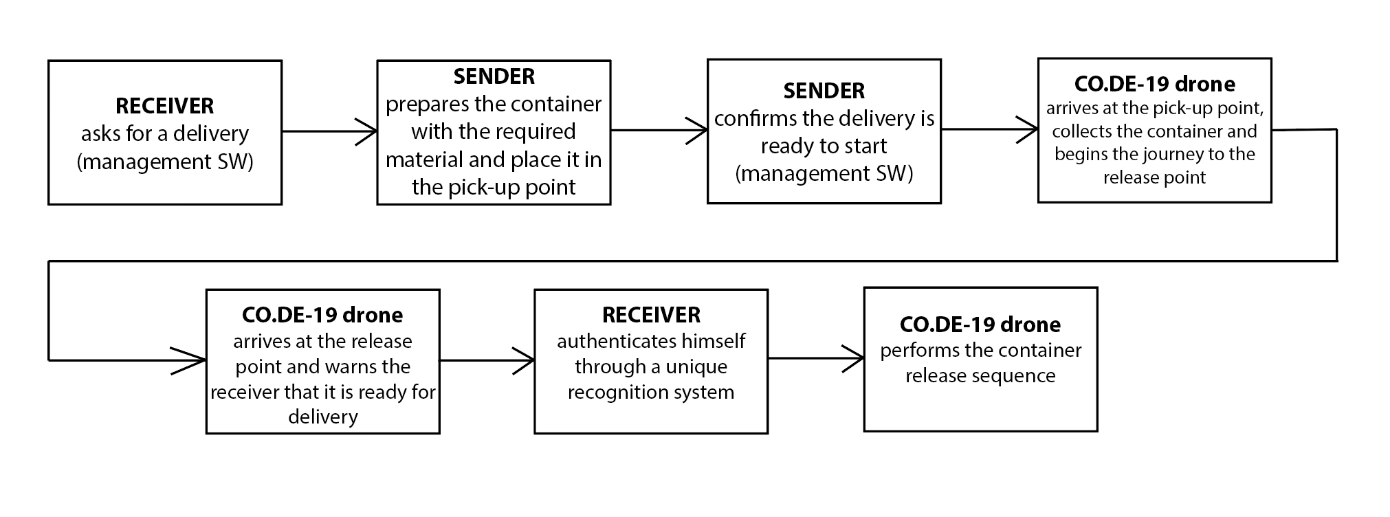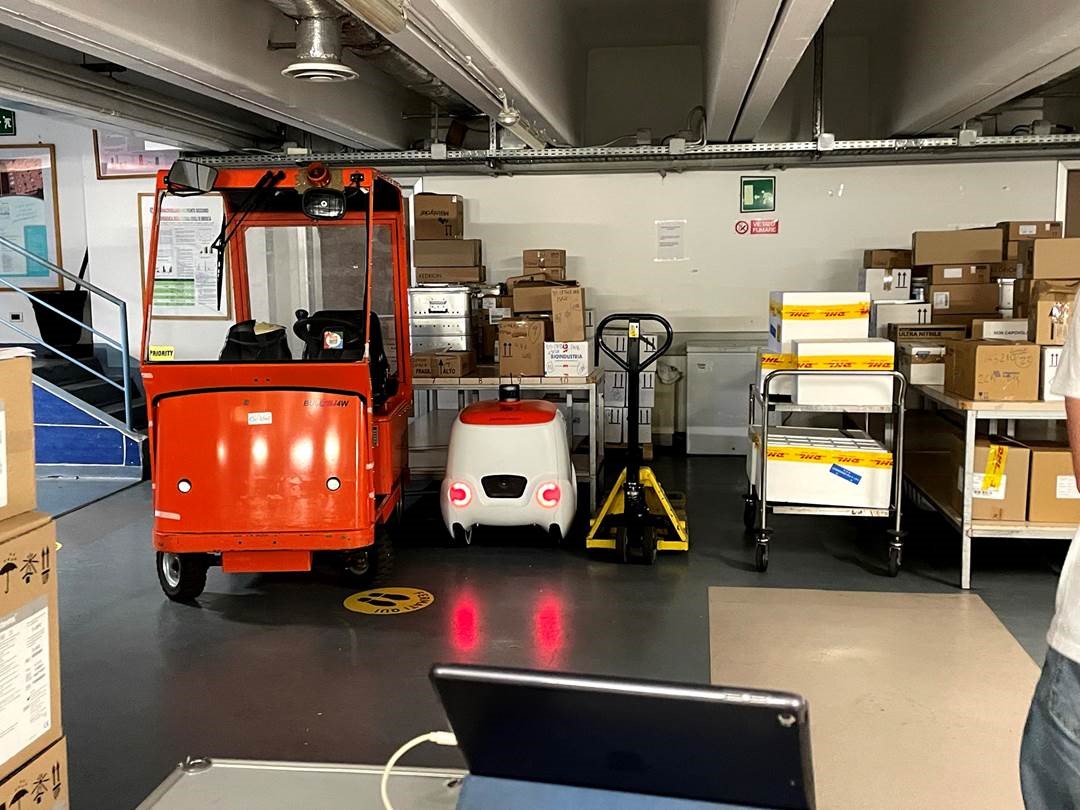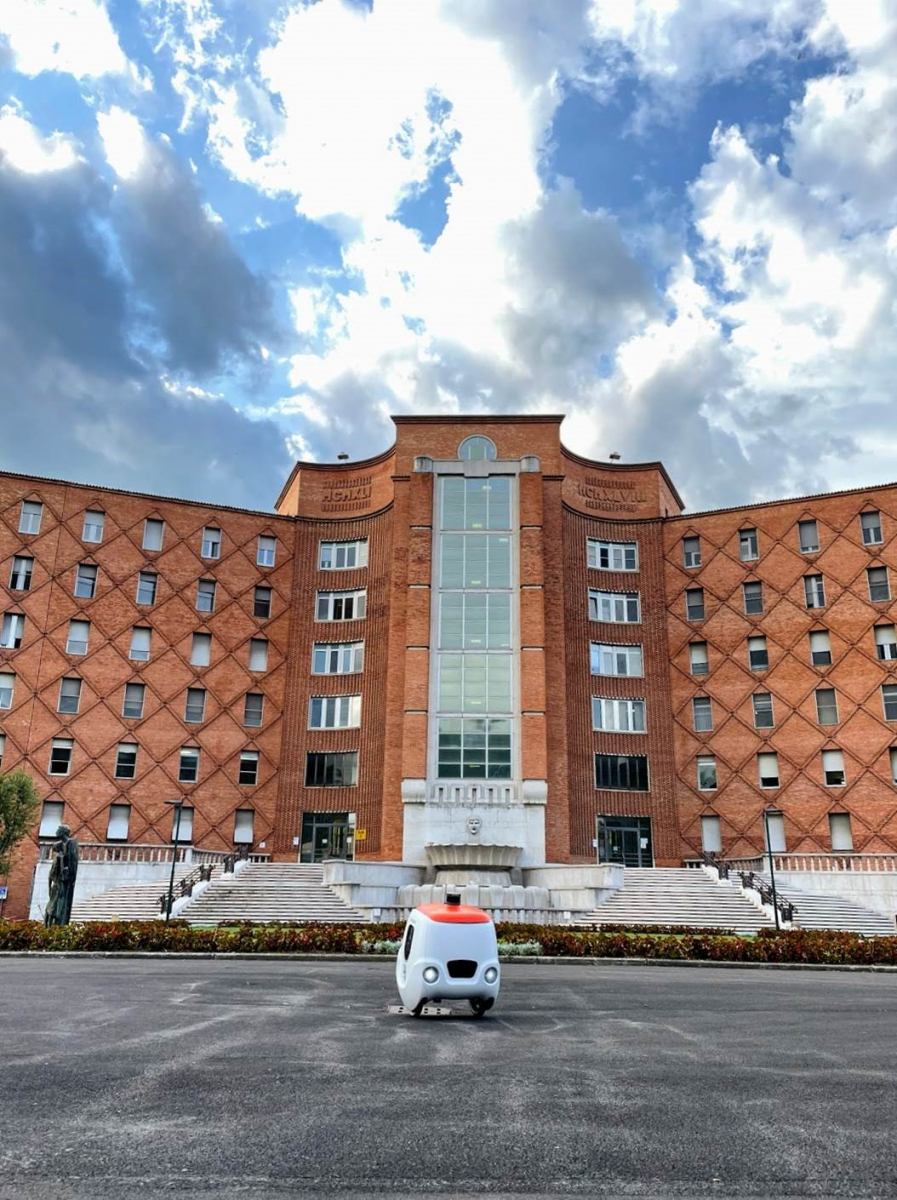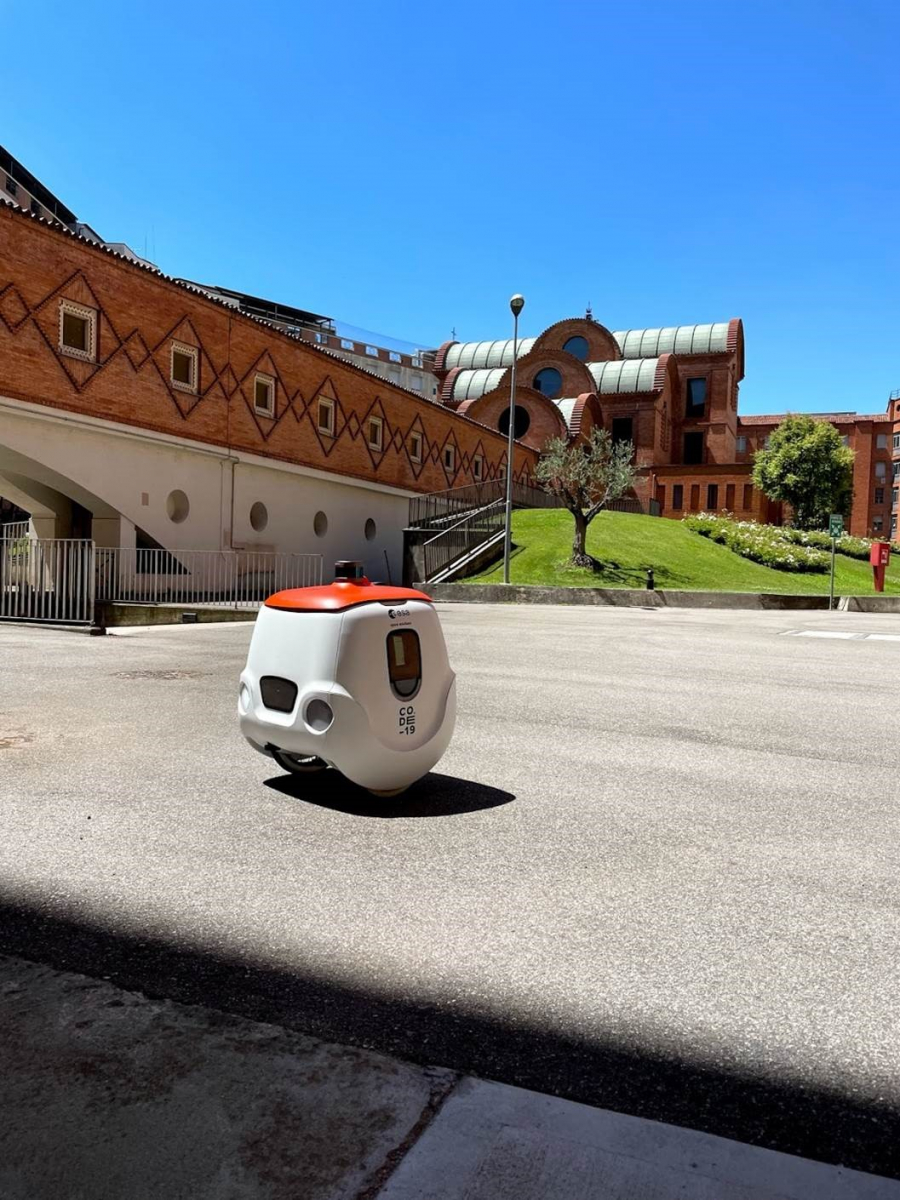
Objectives of the service
The proposed service is intended to overcome some of the issues caused by COVID-19 pandemic which imposes on all of us to minimize the contact and to maintain the physical distance to contain the spread of the virus.
The objectives of the service are
- To substitute human operators for daily operations of low complexity
- To deliver medicines and sensitive goods within the hospital facilities (internal pharmacy shop, wards, analysis labs) without any human involvement
- To reduce contacts between people and reinforce social distancing
- To increase efficiency and reduce errors when performing the deliveries
The proposed solution consists of
- automated system for contactless delivery
- unique self-driving droid able to smoothly provide delivery services in both outdoor and indoor environments
- use a robotic system to guarantee a full no-contact service: from the grabbing and loading phase to the drop off of the delivered content.
By analyzing the needs of the hospital society and the physical peculiarities of campus it is possible to organize an efficient delivery service by adopting a limited number of precautions.
The main elements necessary to start the service are :
- an inspection activity to identify pick-up and delivery points
- the mapping of the reference environments
- the standardization of the container to be used for the deliveries
- the introduction of an order management software
The delivery performed by the droid is safe while bringing sensitive goods: the container inside the drone can be unlocked only by the right recipient who has a unique identification code which allows him access to the contents.
Users and their needs
The first identified user is the Spedali Civili of Brescia in the Norther Area of Italy. This region has been heavily impacted by the first COVID-19 wave back in March/April 2020..
Different categories of the hospital staff will be involved in testing the service:
- laboratory technicians
- health personnel
- pharmacy staff
- surveillance
- service control staff
in addition, patients and hospital visitors will also participate in the delivery service with their presence in the common areas: they are not directly involved in the service, however, they and their needs are also to be considered and it will be necessary to provide some precautions not to interfere with their presence
Identified Needs include:
- laboratory technicians/ Hospital personnel
- send and ship laboratory material (specimens, drugs)
- pharmacy staff
- receive urgent requests and prepare the containers to be shipped
- surveillance
- monitors safety inside the hospital, must keep an eye on that no one interferes with the drone and guarantee execution of the service
- service control staff
- it keeps track of the completion of operations and manages orders, interfaces with the control room and intervenes in the event of a fault
- patients/visitors
- their need is for healing, so CO.DE-19 doesn't have to involve or scare them with his presence
the biggest challenge of the service is to perform the shipping and delivery service by integrating with the hospital flows without attracting attention, improving efficiency and reliability
Service/ system concept
The automated delivery service allows the user, intended as the hospital organization, to include in their procurement processes a tool capable of managing more risky medicines for which fewer personnel are involved hence the lower the risks of contamination of COVID-19 is
The staff involved in the service will receive the necessary documentation to understand how automated deliveries will work, both to request a delivery and how to approach when receiving products
Specific features/functionalities
- autonomous driving
- satellite navigation
- automatic sanitization
- automation of package pick-up and release operations
When the service is in place, the medical staff will be able to send and receive any kind of material (from medicines to documents, from specimens to instruments) without having to deal with transport. it will be sufficient to position the container at the pick-up point, specify in the management application who is the recipient and fulfill the order.
The service includes two main phases: order and delivery:
- Through the software application the operator orders CO.DE-19 that there is a package ready to be delivered from a specific pick-up point to a specific recipient. at this point the drone goes to the station, extracts the Cartesian robot with gripping mechanism, takes and places the container inside, closes the hatch and heads towards the pre-set destination point.
- Upon arrival at the release point, the drone performs the lid opening procedure and releases the package again using the robotic system.


Space Added Value
A high precision, multi-constellation GNSS receiver will be set on board of the drone, with support for all the currently available positioning systems, including Galileo. The need is to reach a sub-meter accuracy: this high precision is strongly required in this application to be able to use a robotic arm for contactless delivery at the curbside or at a specific point. The drone has no other means to understand where to stop apart from the GNSS signal.
The global positioning system in connection with geo-referenced maps is used for outdoor positioning and guidance. High positioning accuracy is required for the drones to identify the exact stop of the pickup at delivery locations. In outdoor missions, the drone does not have a precise description of the surrounding environment, apart from a geo-referenced street map.
Using a lower precision would imply an excessive potential error in determining the stopping location, forcing the sender or receiver of the parcels to actually look for the droid and potentially reaching it out several meters from the expected location.
Current Status
The project has been completed with the collection of the feedback from the medical staff of the Spedali Civili of Brescia, pilot user of the service. The personnel expressed satisfaction and added value in doing their daily tasks more efficiently and safely.
The activities still in progress concern the marketing of the service and the enagegement with other hospitals which face the same chellanges as the pilot user.






